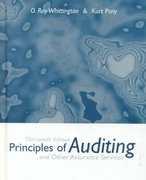



Units sold at Retail Units Acquired at Cost 210 units @ $13.50 = $2,835 160 units @ $22.50 Date Activities Jan. 1 Beginning inventory Jan. 10 Sales Jan. 20 Purchase Jan. 25 Sales Jan. 30 Purchase Totals 150 units @ $12.50 = 1,875 180 units @ $22.50 320 units @ $12.00 = 680 units 3,840 $8,550 340 units The Company uses a perpetual inventory system. For specific identification, ending inventory consists of 340 units, where 320 are from the January 30 purchase, 5 are from the January 20 purchase, and 15 are from beginning inventory. Exercise 5-3 Perpetual: Inventory costing methods LO P1 Required: 1. Complete the table to determine the cost assigned to ending inventory and cost of goods sold using specific identification. 2. Determine the cost assigned to ending inventory and to cost of goods sold using weighted average. 3. Determine the cost assigned to ending inventory and to cost of goods sold using FIFO. 4. Determine the cost assigned to ending inventory and to cost of goods sold using LIFO. Complete this question by entering your answers in the tabs below. Required 1 Required 2 Required 3 Required 4 Complete the table to determine the cost assigned to ending inventory and cost of goods sold using specific identification. (Round cost per unit to 2 decimal places.) Specific Identification Available for Sale Cost of Goods Sold Purchase Date Activity Units Unit Cost Units Sold Unit Cost COGS Ending Inventory Ending Ending Cost Per Inventory- Inventory- Unit Units Cost 50 $ 13.50 $ 675 Jan. 1 Beginning inventory 210 $ 13.50 160 $ 13.50 $ 2,160 Jan. 20 Purchase 150 $ 12.50 Jan. 30 Purchase 320 $ 12.00 0 0 680 160 $ 2,160 50 $ 675 Required 1 Required 2 Required 3 Required 4 Determine the cost assigned to ending inventory and to cost of goods sold using weighted average. (Round cost per unit to 2 decimal places.) Weighted Average - Perpetual: Goods Purchased Cost of Goods Sold Inventory Balance Date # of units Cost per unit # of units sold Cost per Cost of Goods unit Sold # of units Cost per unit Inventory Balance January 1 210 @ $ 13.50 = $ 2,835.00 January 10 999 January 20 Average cost January 25 January 30 Totals










